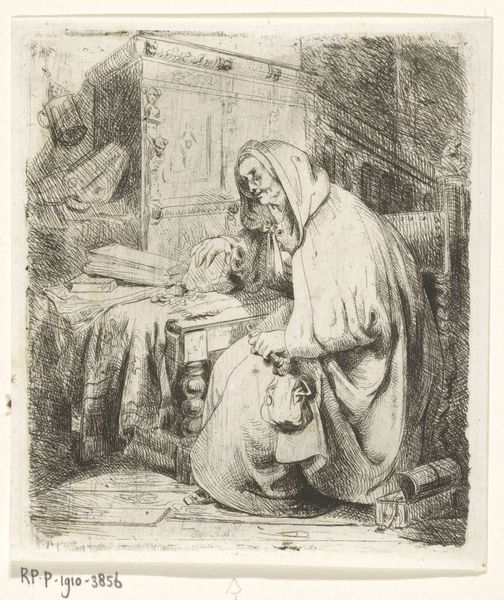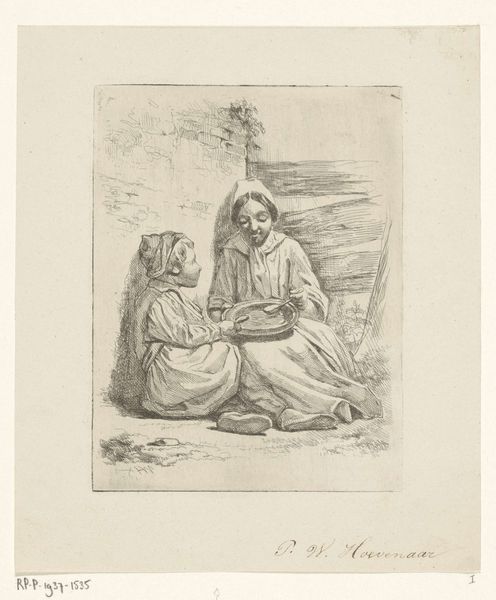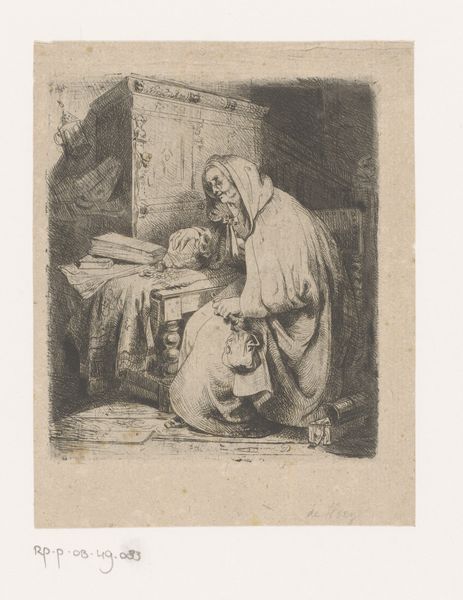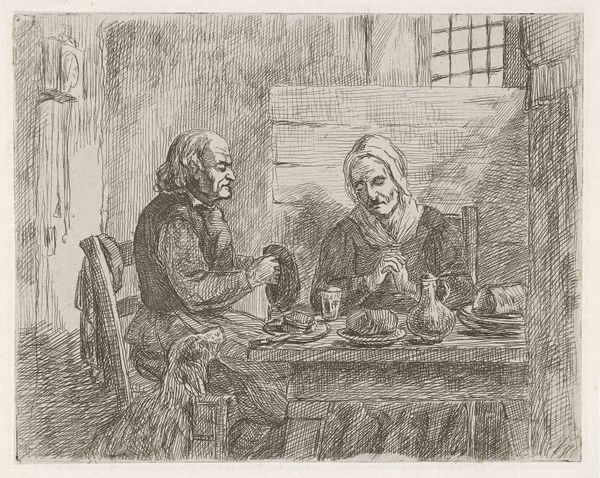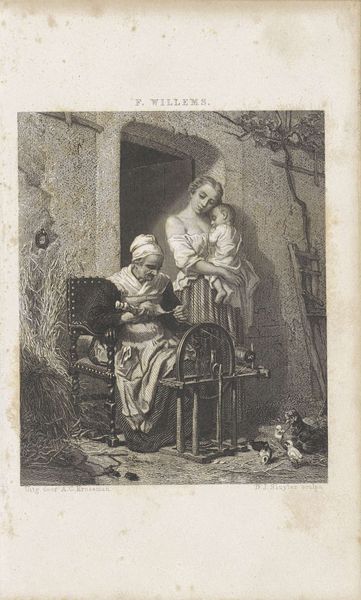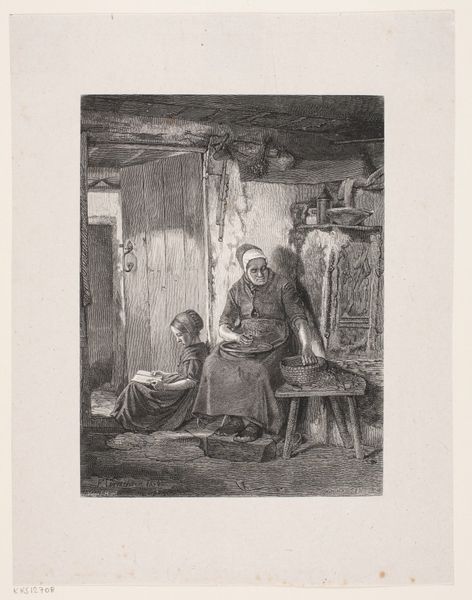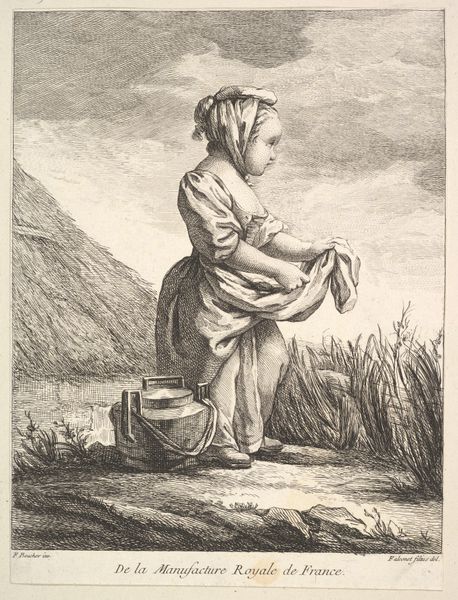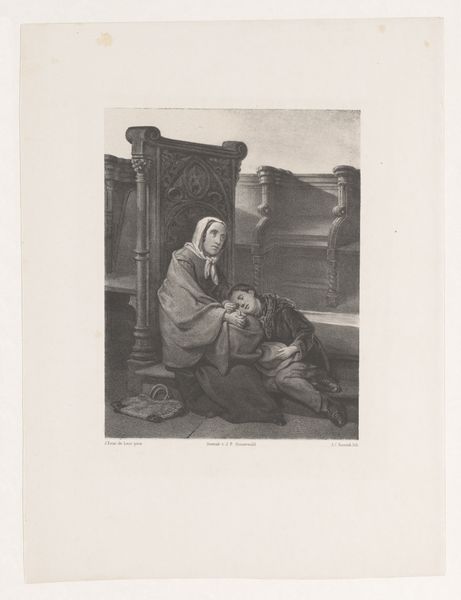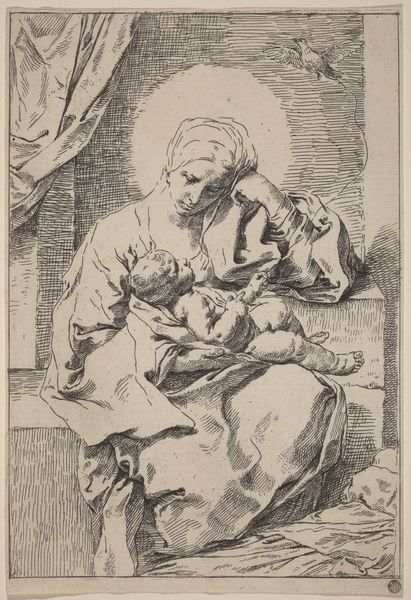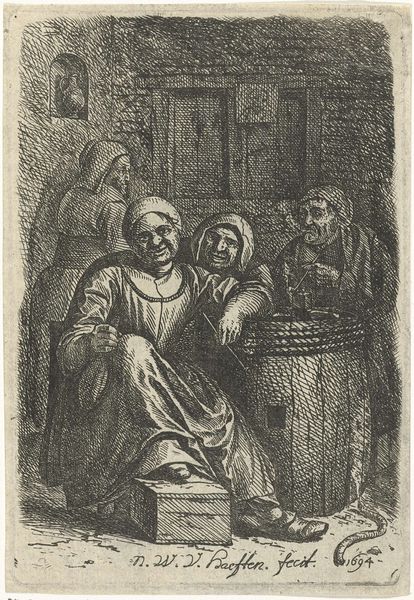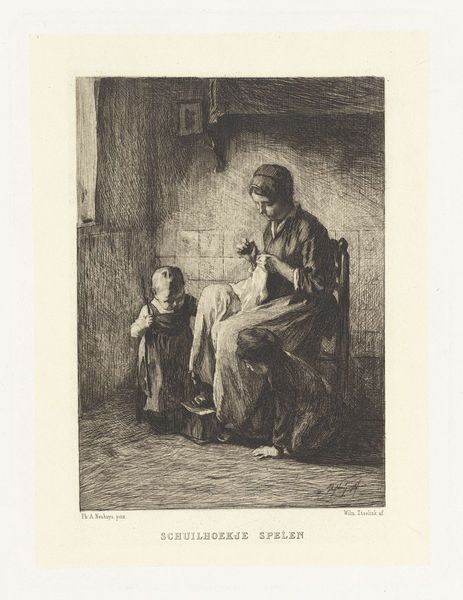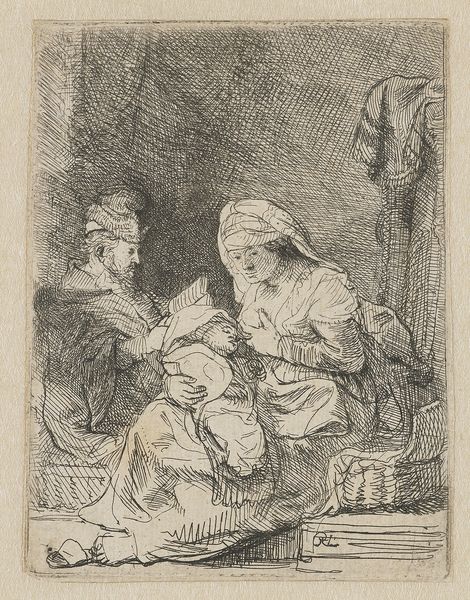
drawing, print, etching, pencil
#
portrait
#
pencil drawn
#
drawing
# print
#
etching
#
pencil sketch
#
charcoal drawing
#
pencil drawing
#
pen-ink sketch
#
pencil
#
pencil work
#
genre-painting
#
realism
Dimensions: height 134 mm, width 103 mm
Copyright: Rijks Museum: Open Domain
Curator: This etching, dating roughly from 1818 to 1863, is titled "Girl and Boy Spooning from a Plate." The piece is currently held in the Rijksmuseum and attributed to Willem Pieter Hoevenaar. What's your first take on it? Editor: It's stark. I am immediately struck by the coarse lines and how they delineate not just form, but also, perhaps unintentionally, poverty and a difficult life. The details feel so lived-in. Curator: The figures are really intimate. You get the sense of their world. Note how Hoevenaar positions them low to the ground, sharing a modest meal. It reflects societal structures of inequality, revealing who has access to what, who doesn't, and how power dynamics manifest in daily life. Editor: Yes, but consider the making, too. The stark, almost brutal line work is inherent to the etching process, and the printing allows this image, potentially depicting poverty, to be reproduced and disseminated to a wider audience, for wider social viewing, and discussion. It's fascinating, the interplay of art as documentation and art as commodity. Curator: Precisely. I wonder about their individual stories within the social context. The girl has this thoughtful look – almost a gaze that acknowledges our presence – as if understanding her own precarious position. It suggests an acute awareness of their circumstances and the structural barriers at play. Gender is also a very obvious aspect of this image as one can question the relationship between mother and daughter or sisters who were often forced to start working at a young age in that time period. Editor: And how is this plate made and owned, passed around through labor to provide even the scantest sustenance to these two, the very picture of what many consider to be wretched refuse. Consider that everything—the clothing, the plate, the actual physical food—begins with extraction from somewhere or other. Someone crafted that simple, but deeply significant plate and its simple function is on display for all to ponder, in the act of creation, depiction, consumption. Curator: True, we should consider the social and economic structures that created the conditions for such labor and unequal access to resources. Editor: The humble medium almost elevates their struggle, as the materials themselves feel so close to the bone. It is as if it transcends the class confines of 'high art' of the time through its accessibility and subject matter. Curator: That really sheds new light on how art functions within power structures – either reinforcing them or potentially critiquing them. Thanks for expanding my understanding of its impact, editor. Editor: And thank you for widening my social consciousness, curator.
Comments
No comments
Be the first to comment and join the conversation on the ultimate creative platform.
